Exploring Barrier-Free Tokyo
The Olympic and Paralympic Games Tokyo 2020 were a global success amid unprecedented circumstances, and one lasting benefit they have brought is a range of improvements to make transportation, accommodation, and other types of facilities more accessible. The Tokyo Metropolitan Government (TMG) is dedicated to building on those benefits for all tourists, including those with physical impairments. To help make these improvements widely known, the TMG has released Tokyo Sightseeing Accessibility Guide, which features sightseeing courses linking popular spots. The guide presents accessible ways to enjoy Japanese cuisine, go shopping, explore skyscrapers, and see traditional architecture, while also providing detailed information on accessible restrooms and much more.
To experience first-hand how Tokyo is moving towards a barrier-free future, wheelchair user Togashi Takeshi explores navigating Course 5: Tsukiji, Tsukishima, located in east Tokyo, one of the 30 courses outlined in the guide.
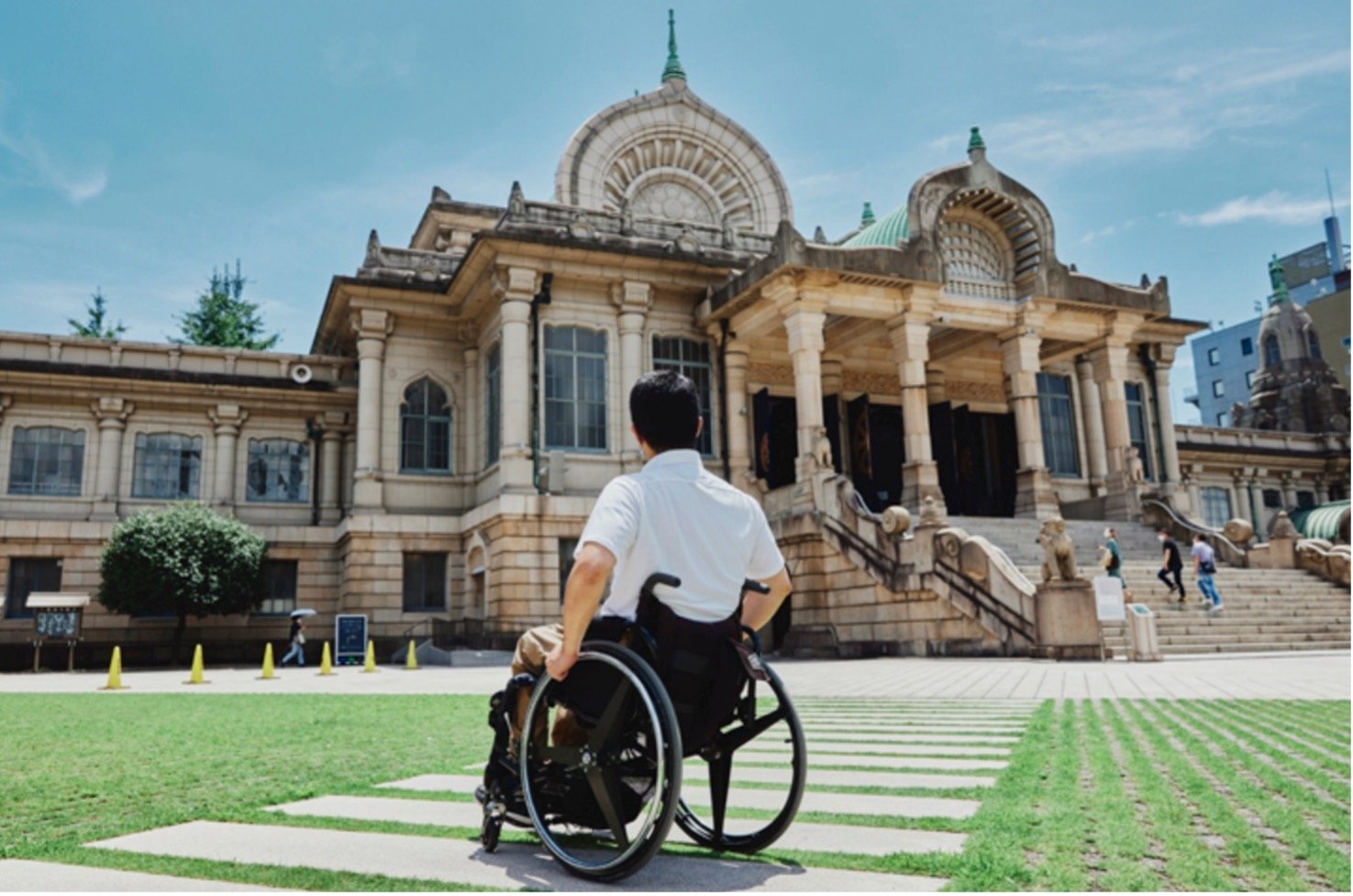
First stop: Tsukiji Hongwanji Temple
Right outside Tsukiji Station, this Buddhist temple has over 400 years of history. Japanese shrines and temples are very popular tourist destinations but entering them can pose quite a challenge to physically impaired people. He remarked that, "I did not think I would be able to get close because the stairs in front were rather intimidating, but thanks to the slope and elevator, I could enter the main hall and see the elaborate golden decorations up close."
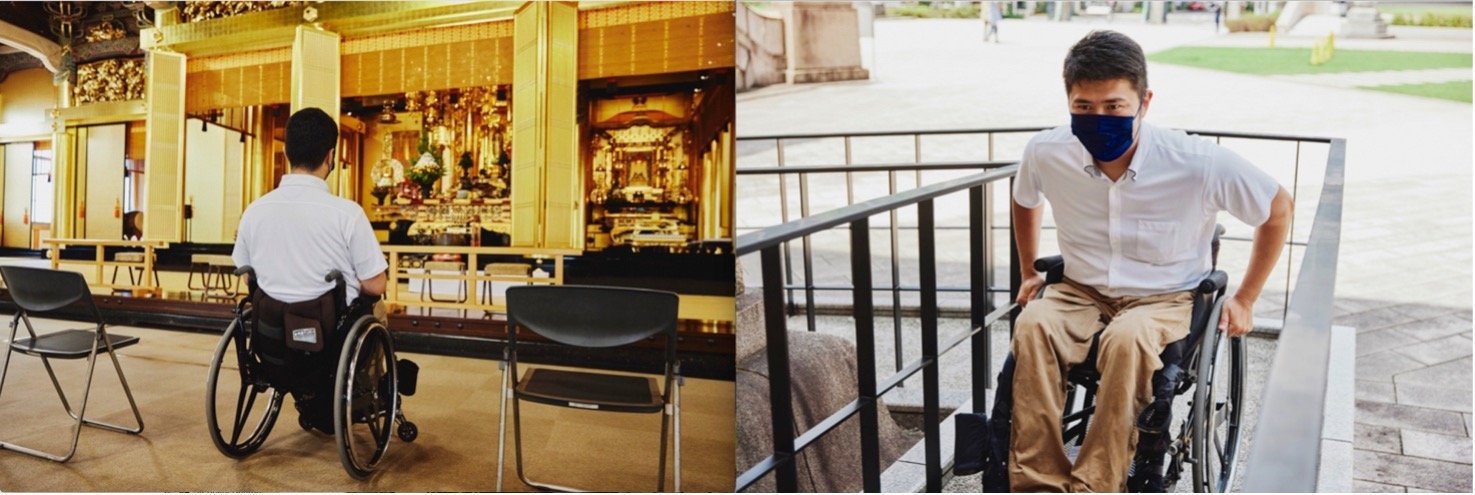
Next destination: Tsukiji Uogashi
The Guide has a lot of information on how to enjoy Japan's famous food culture, and just five easy minutes by wheelchair along the road from the temple, there is the long-established Tsukiji Outer Market where the redeveloped Tsukiji Uogashi building stands. In late morning, the market is not so busy, making it easy to survey the dozens of fresh fish stores at leisure.
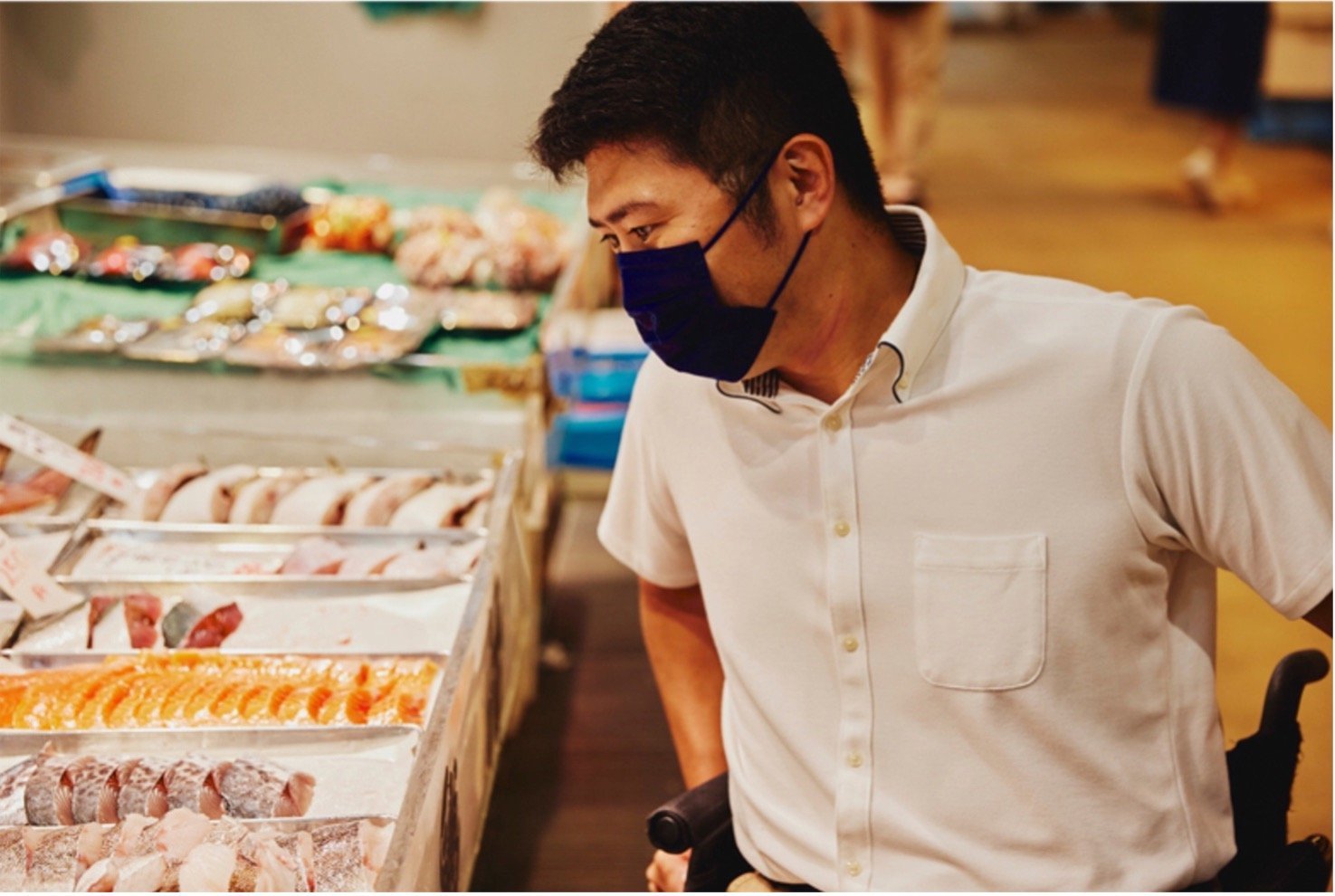
Then: Tsukishima Monja Street
Barrier-free progress is being made on the Toei Subway lines, operated by the TMG, including the installation of elevators at all stations. It is a short ride from nearby Tsukijishijo Station to Tsukishima. Here, visitors can find Monja Street, where around 80 monja-yaki shops—a savory specialty dish of pan-fried batter, originating from Tokyo—make the area a center for one of Japan's most celebrated iconic foods.
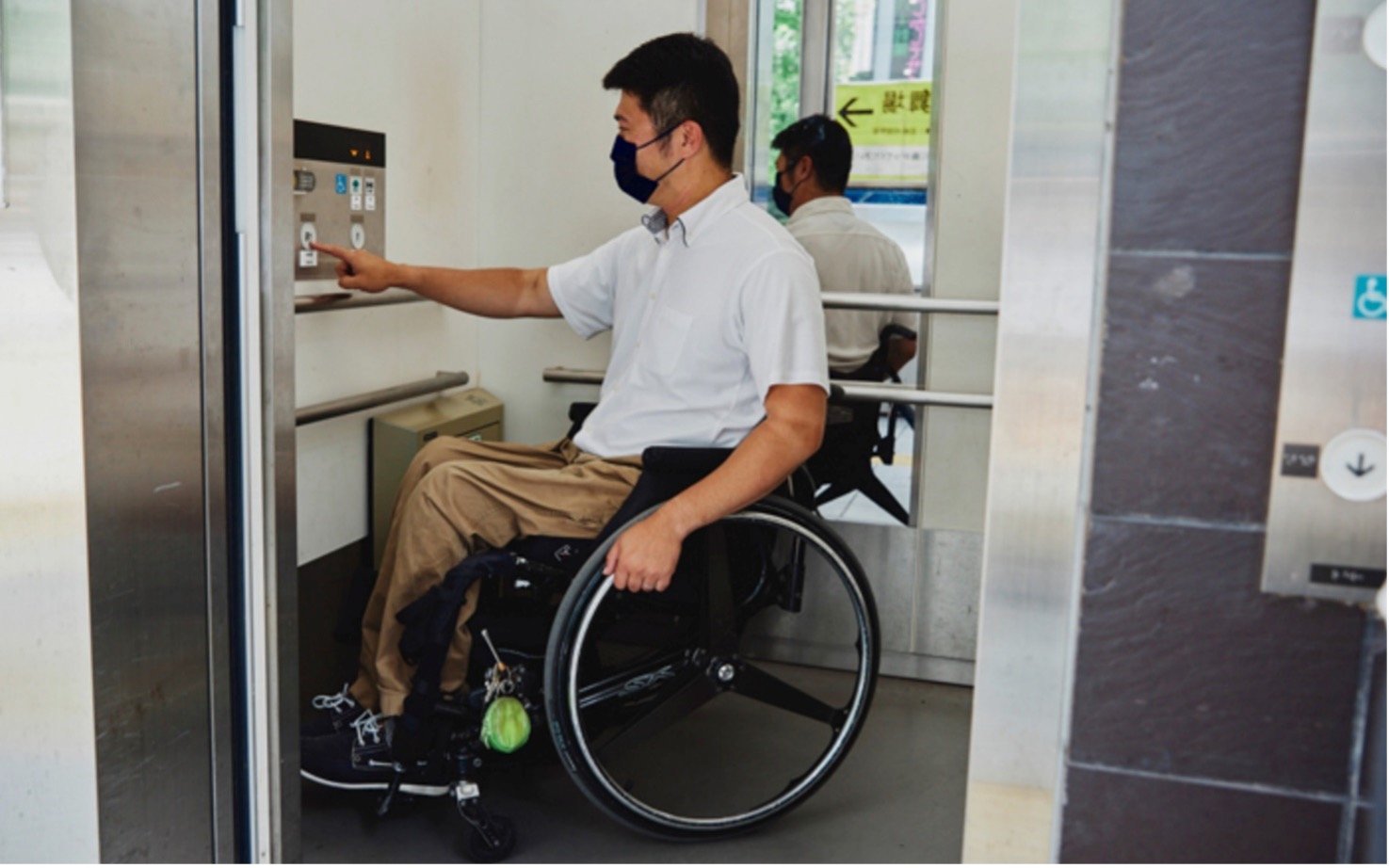
Last stop: Tsukuda Park
The foray is completed at the park along the Sumida River, which is accessible by ramps. Here the calm, flowing water, the greenery and the dappled shade of the trees make a curious contrast with the dizzying geometry of the waterfront towers—Togashi, taking in the atmosphere, said, "To be honest, I was a bit worried that going sightseeing with my able-bodied friends might place a burden on them, but this guide really did put me at ease exploring the city."
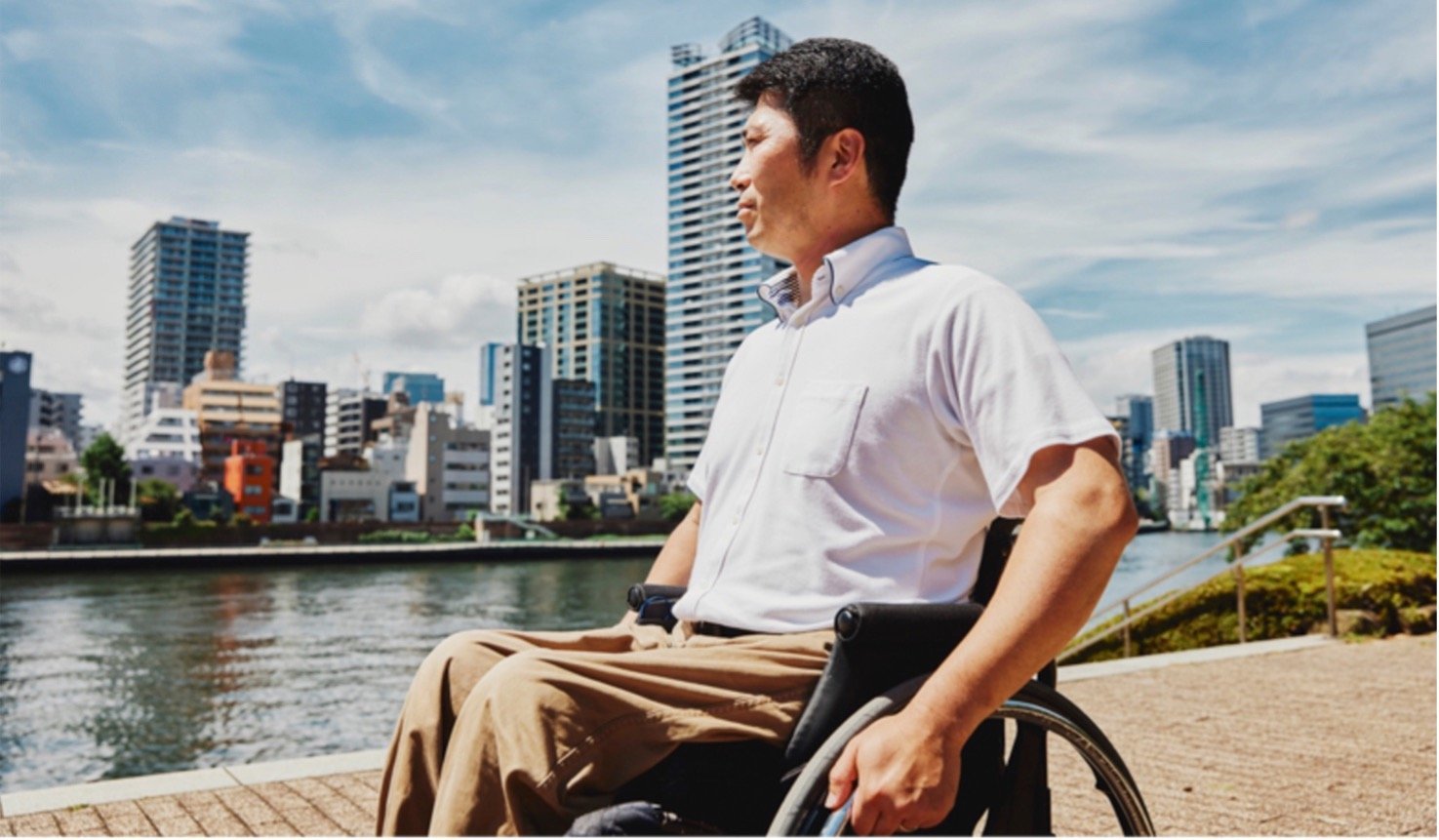
Looking to the future, the TMG plans to further its barrier-free support beyond the facilities and equipment such as accommodation and sightseeing buses, into "soft" support like human assistance. In this way, they aim to make the urban environment a place where ever more people can enjoy sightseeing with peace of mind.
https://www.sangyo-rodo.metro.tokyo.lg.jp/tourism/accessible-tourism-tokyo/en/
https://www.sangyo-rodo.metro.tokyo.lg.jp/tourism/accessible/en/




